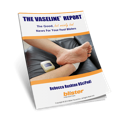The Advanced Guide to Blister Prevention [2013]
WHY WRITE THIS GUIDE?
Blisters are one of the most common injuries in sport and everyday life. In fact blisters are so common they’re not taken seriously, even when they’re exceptionally painful and limiting. It’s not that they’re an insignificant injury. But it seems that because they are an injury of the skin rather than the musculoskeletal system, they tend to be relegated to an injury of lesser importance. A big part of the problem is that misinformation is rife and management ill-informed. That’s what prompted me to write The Advanced Guide To Blister Prevention in 2013.
You can download the guide for free – no email address required.
WHO IS THIS GUIDE FOR?
The guide is freely available to everyone – each chapter is online so you can access it any time. You can cut to the chase and read Part 2 detailing specific blister prevention strategies. But to get the most of the guide it makes sense to read it all the way through at least once, and then return to it as a reference when needed. And join our list if you’d like to download your own copy.
Information from this resource can be cited using the reference below:
- Rushton, R. 2013. The Advanced Guide to Blister Prevention. 1st ed. [ebook]. Available from: http://staging2.bloomd10.sg-host.com/the-advanced-guide-to-blister-prevention.


Simon Bartold
“Bartold Biomechanics member Rebecca Rushton has written an incredible resource on blisters and their prevention. Blisters are often trivialised, but they can be a very big problem. I reckon Rebecca has covered all the bases in this 7 chapter tome… and… it’s free!”
Simon Bartold, Podiatrist at Bartold Biomechanics ~ www.bartoldbiomechanics.com

Christian Madsen
“The Advanced Guide to Blister Prevention’ is an amazing resource for me as an ultra runner. It is very thoroughly made with a lot of scientific research about why blisters occur and how they are prevented, combined with a lot of practical and helpful details and advice for blister prevention. I can highly recommend this resource to all ultra runners if you want to learn how to prevent blisters for the long haul – Excellent work!”
Christian Madsen, Scandinavian representative for the Marathon Des Sables ~ www.ultrarun.com
Part 1 – FOOT BLISTER CAUSES
Chapter 1: The Problem Of Foot Blisters
Foot blisters are a common injury experienced by active people: runners, hikers and court sport players in particular. But anyone can get blisters, and most of us have! Too often, prevention is neglected and treatment is the fall-back. The problem with this approach is it rarely provides 100% pain relief, requires ongoing intervention and you need to have the right gear on-hand, at that very moment in time.Chapter 1: The Problem Of Foot Blisters
Chapter 2: The Injury Mechanism
The mainstream understanding of what causes foot blisters is a very simplistic one – to the point of being incorrect. Misinformation is widespread and it is holding the state of mainstream blister prevention at a standstill. There is a desperate need for this to change.
Chapter 3: Why We Get Blisters On Our Feet
The type of skin, the micro-climate and the forces encountered by your feet are unique compared to all other areas of your body. These factors combine and contribute to blister formation. Find out what these factors mean for your blister prevention.
Chapter 4: Blister Risk Factors
Research has identified a number of risk factors for foot blisters. Some are very easy to explain – they are directly involved in the cause of blisters. Others are less intuitive and might surprise you.
Part 2 – BLISTER PREVENTION STRATEGIES
Blister prevention fails for a reason. Part 2 of this guide is all about why it fails and how to make the most of what each strategy can offer.
Chapter 5: Your Shoes & Socks
Blister prevention starts with optimal shoe fit. Then there are things you can do with your choice of socks to prevent blisters (moisture-wicking socks, double-sock systems and even toe-socks). And see how insoles, orthotics and special patches applied to the shoe or insole work. We’ll look at some simple things you can do yourself and some others that a sports medicine professional can help you with.
Chapter 6: Your Skin
Training your skin to adapt to blister-causing forces is a blister prevention consideration not to be ignored – it’s a rookie mistake to overlook this one. And discover the truths about how applying certain products to the skin can reduce blister incidence – drying preparations, lubricants and taping. This chapter is a must-read!
Chapter 7: Your Activity
Blister-causing forces on the skin can be reduced by modifying aspects of your running form and training regime. If you’re a trail runner or play a court sport (tennis, netball, basketball etc) watch the video in this chapter.
Chapter 8: Comparisons
We’ll wrap it all up with a comparison chart that outlines the pros & cons and a 3-star rating of the strategies discussed. So you can see at a glance how one strategy compares to another.
Thousands have used my advice to fix their foot blisters and have stayed in their race after I have personally treated their blisters. I’m here to tell you that you don’t need to be a podiatrist to do this.
SUBSCRIBE TO OUR NEWSLETTER
SUBSCRIBE TO OUR NEWSLETTER TODAY, AND YOU’LL BECOME A VIP SUBSCRIBER, WITH IMMEDIATE ACCESS TO THE VASELINE REPORT.
Benefits:
The Vaseline Report — right now
My best tips, tricks and insights
The latest blister news and products
